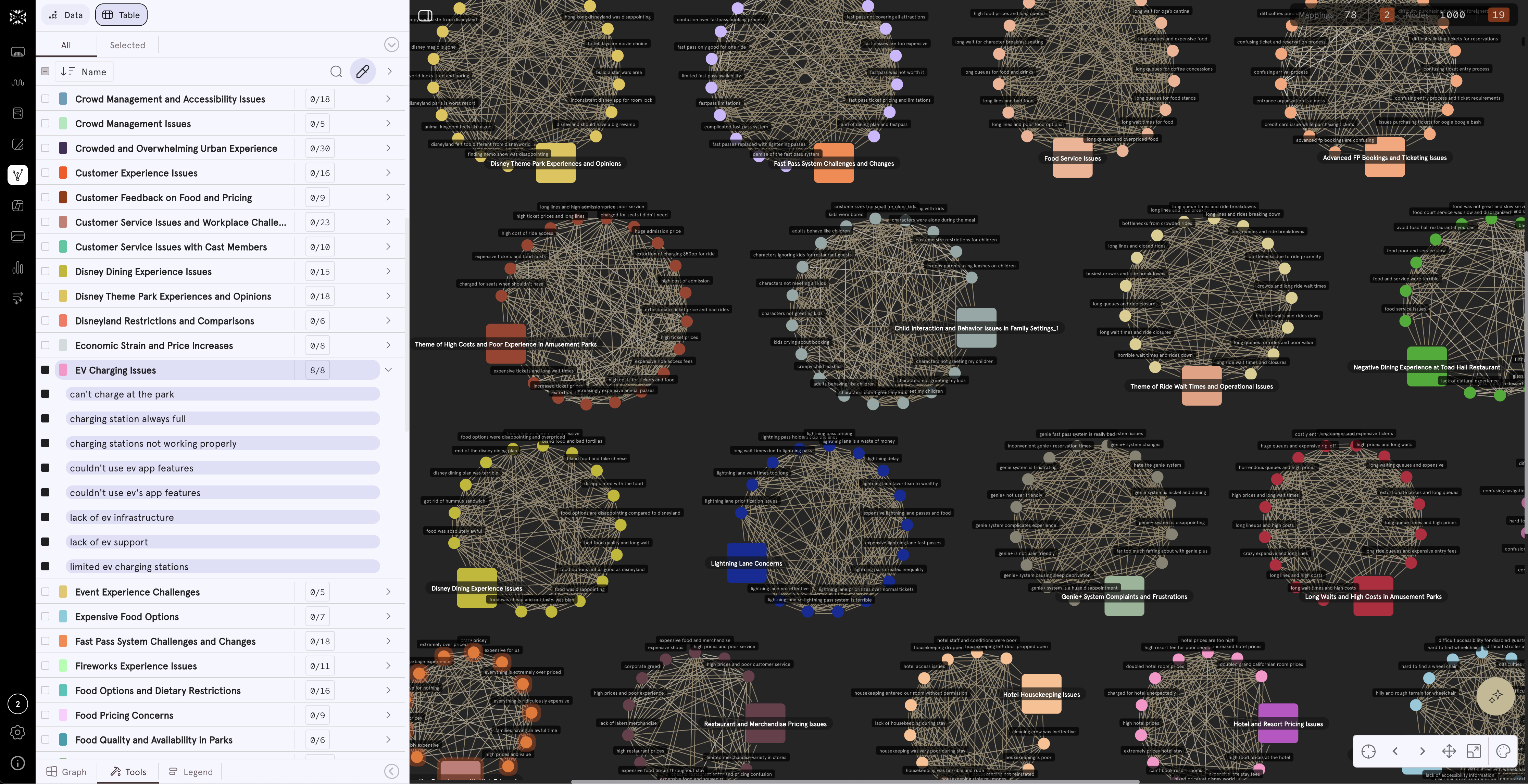What is Data Transformation?
Learn how data transformation structures unstructured text into actionable insights with reliable, repeatable analytics processes.
The transformation step serves as our clearest differentiator and strongest entry point for understanding our platform's unique value.
Overview
Traditional NLP pipelines and sentiment analysis provide valuable insights, but they treat language as a flat surface—analyzing keywords and emotions without the ability to extract the wider dimensions of meaning contained within textual data.

Establishing A Ground Truth
Our data transformation capabilities establish a "ground truth" that serves as the foundation for:
- Repeatable analytics - Consistent results across different users and time periods
- Reliable insights - Trustworthy analysis that stakeholders can depend on
- Quantifiable results - Measurable outcomes that support business decisions
Without this structured foundation data processing pipelines lack the flexibility and power to drive strong business value. Enrichment with labels isn't enough to deliver meaningful business impact.
Transformation Approaches
Mapping
Human-Defined Truth
- Define your own business-specific truth
- Flexible and adaptable to your goals
- Customizable to industry requirements
Knowledge Graphs
Automated Structure
- Requires no manual input
- Cannot be adjusted or customized
- Fixed relationship patterns
Transformation
Our end-to-end transformation pipeline differentiates us in the market:
Normalization → Transformation → Analysis1. Normalization
After ingesting data via File Upload or API our conversational schema imposes a baseline structure ready for transformation.
2. Transformation
Data is enriched and then structured using either data mappings or knowledge graphs that support advanced analytics.
3. Analysis
Answers to business questions and sophisticated insights are extracted from a stable, transformed foundation or "ground truth."
The Power of Transformation
[Video highlighting goal-based analysis. Concept of creating an analytical layer.]
Delivering on Customer Needs
Customer Trust & Repeatability
Challenge: "How do we know we can trust AI-generated results? Is the analysis reproducible?"
Solution: By locking analysis at the document level via labels, maps, and knowledge graphs, every layer of analysis builds on a stable foundation, directly addressing trust and reproducibility concerns.
Beyond Basic Enrichment
Challenge: Customers questioning the specific value of enrichment alone.
Solution: While adding labels provides value, transformation shows the bigger picture. Labeling with AI becomes part of a larger, more valuable process that drives real business outcomes.
Granular Analysis Requirements
Challenge: Need for extremely granular, nuanced distinctions in data analysis.
Solution: The combination of enrichment + mapping enables capture of granular themes beyond high-level labeling, supporting goal-based insights tailored to specific business objectives.
Key Benefits
- Defensible Results: Structured transformation makes AI analysis trustworthy and explainable
- Business Alignment: Flexible mapping adapts to your specific business goals and requirements
- Scalable Foundation: Consistent process handles growing data volumes without losing accuracy
- Competitive Advantage: Full transformation pipeline differentiates from basic labeling solutions
Ready to see data transformation in action? Contact our team to explore how structured transformation can unlock insights from your unstructured data.
Updated 2 days ago
